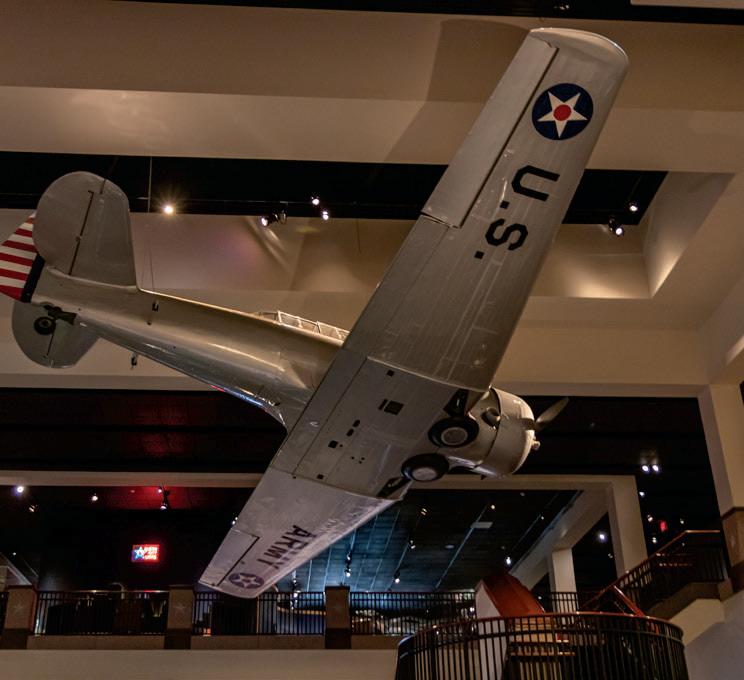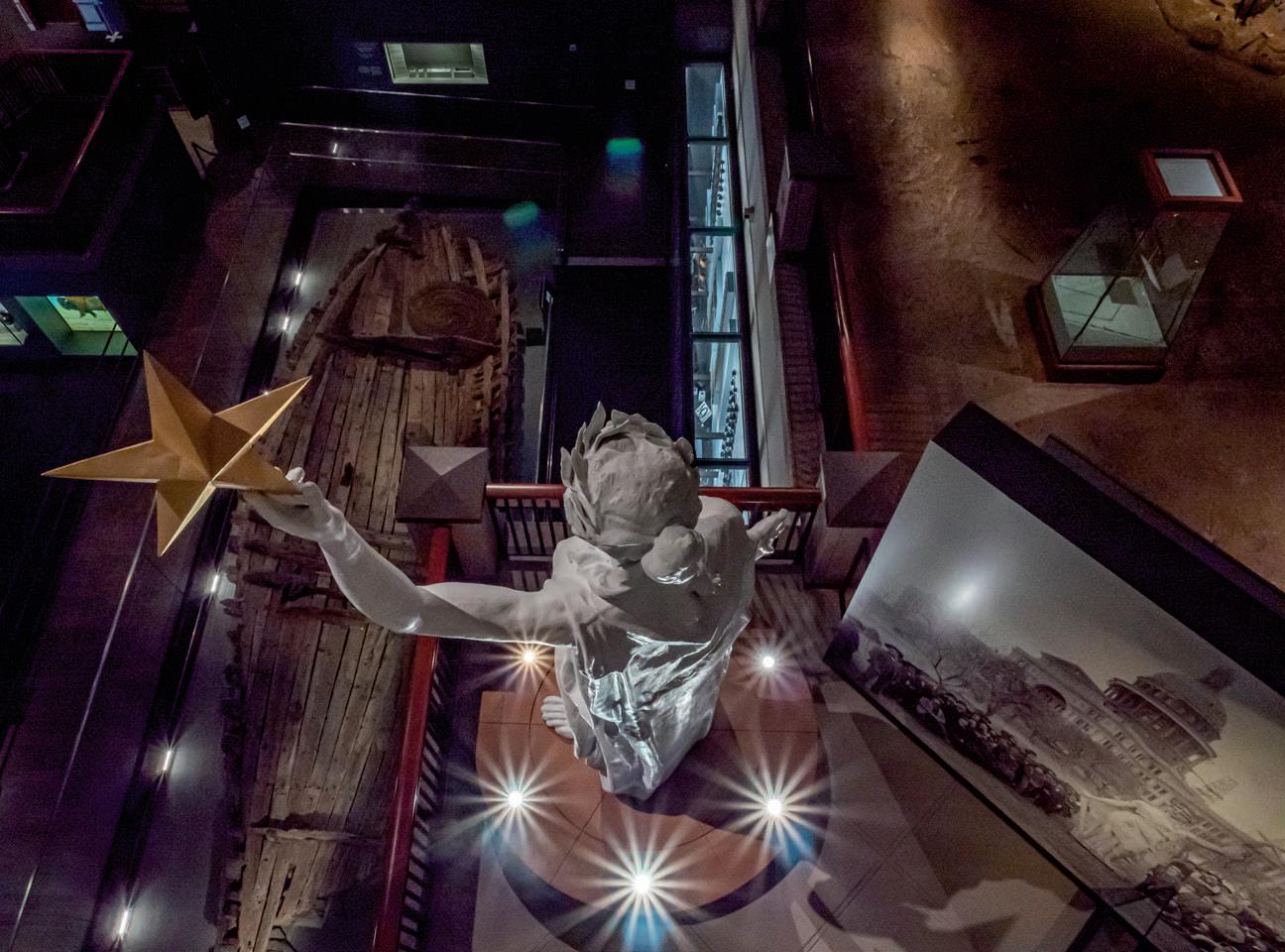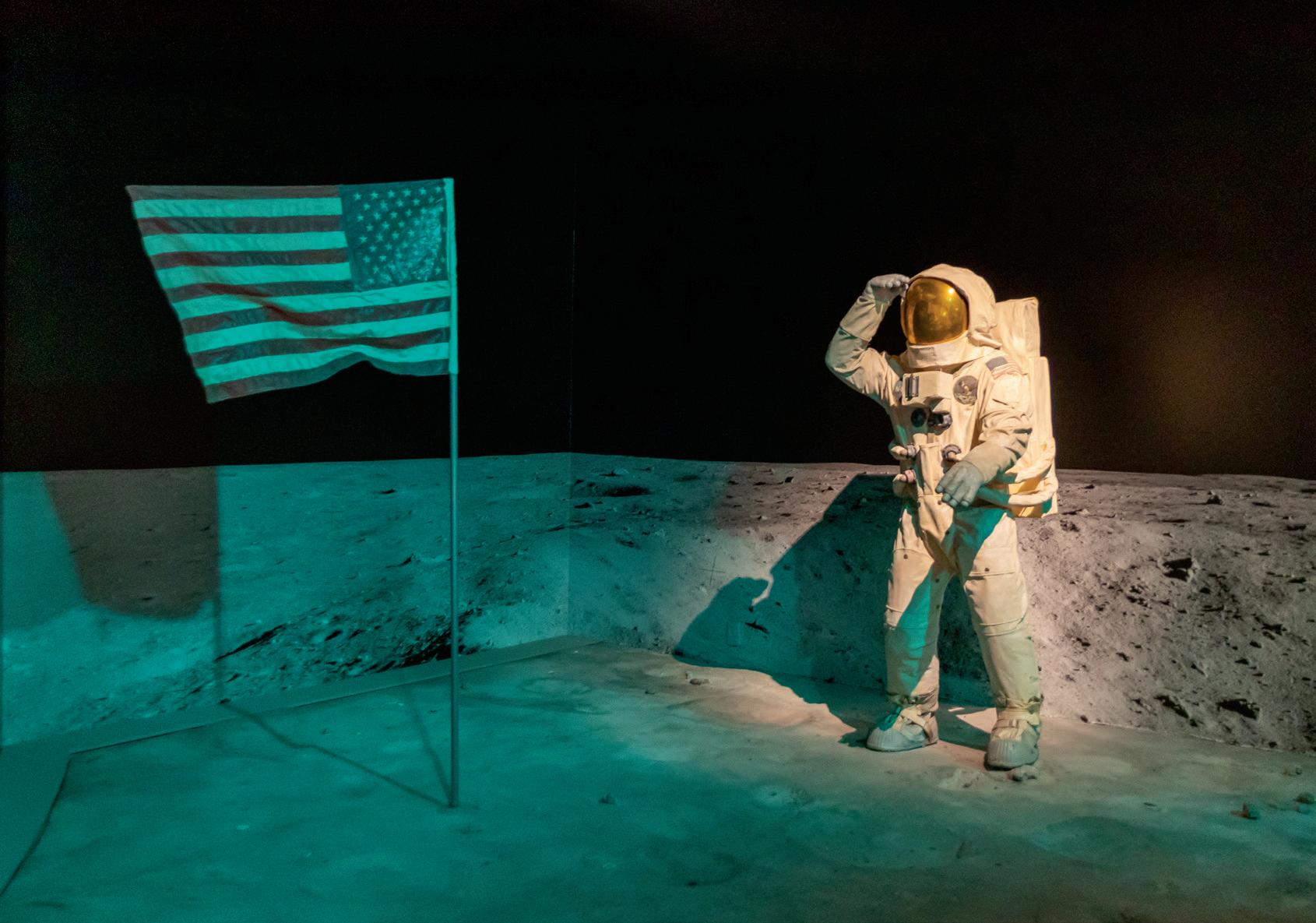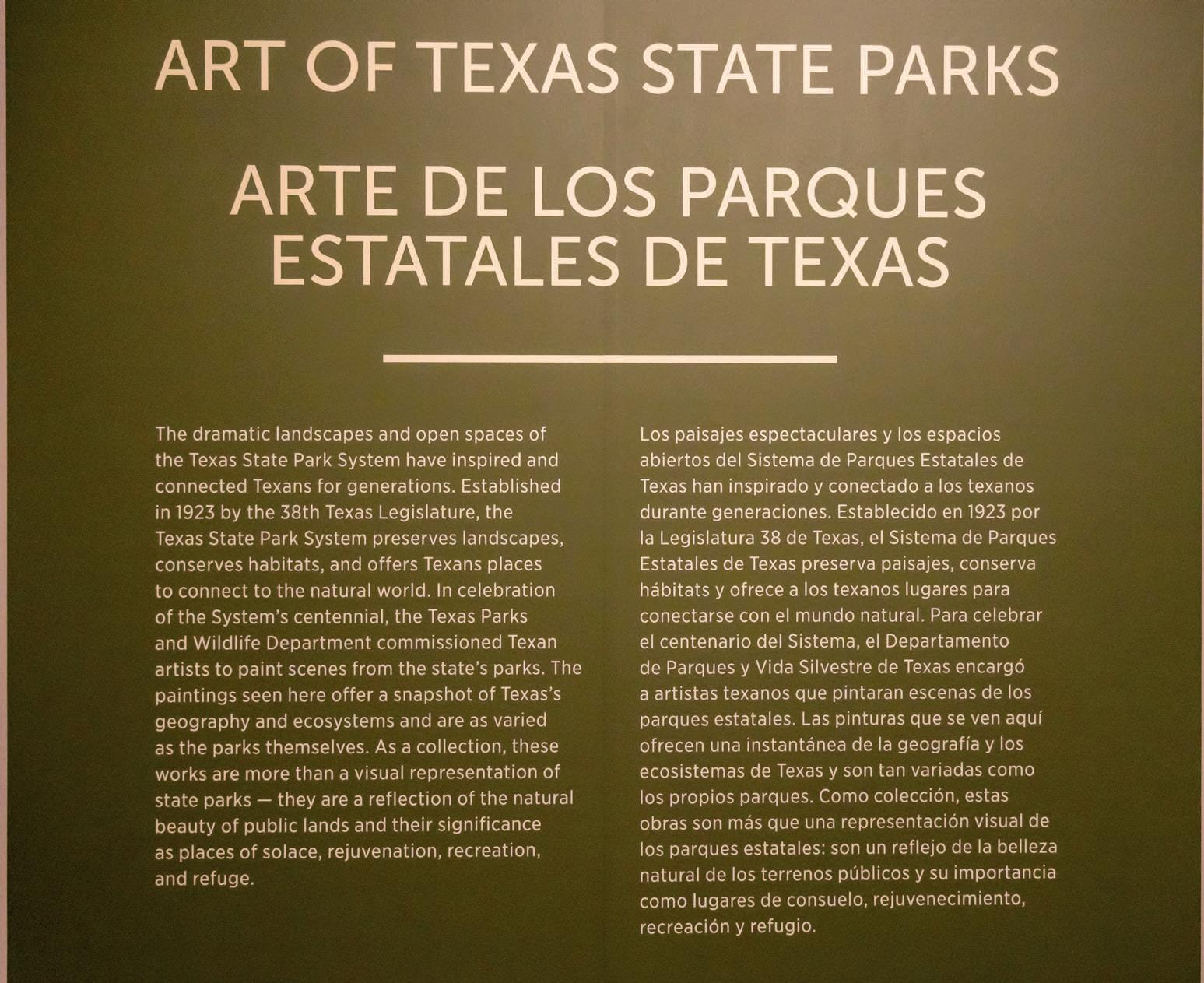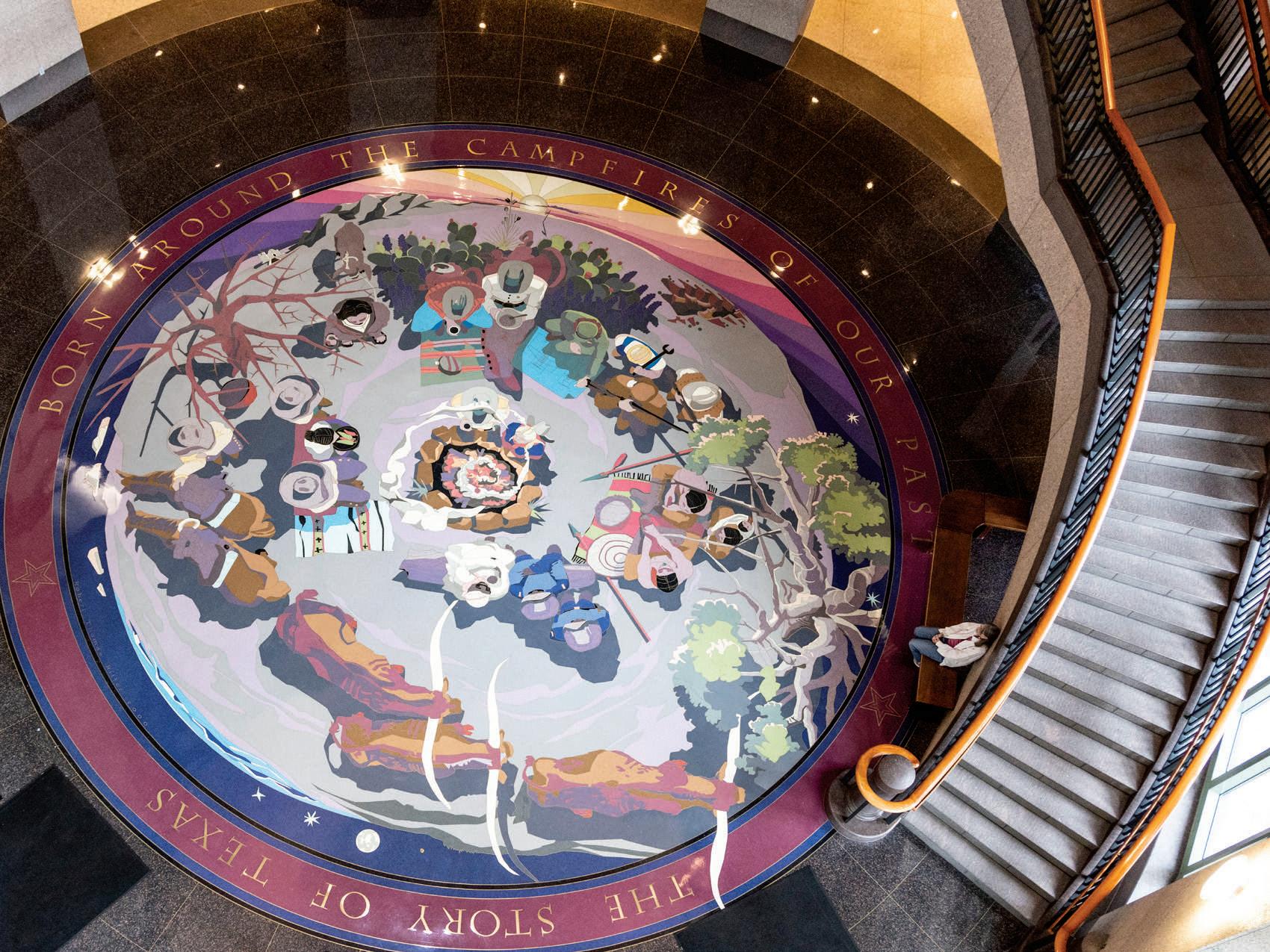
2 minute read
Three Floors, Three Themes: Land, Identity, and Opportunity
Visitors enter through the rotunda, where they see—and likely walk across—the mosaic “Born Around the Campfires of Our Past,” by Texas artist Robert Ritter. This colorful piece includes the state’s flora and fauna, while also depicting those who have shaped Texas history. These representative individuals— Buffalo Soldiers, Vaqueros, Conquistadores, Missionaries, American Indians—are sitting around a campfire, presumably telling stories of their people and the land.
Some of these stories are told on the first floor of the Museum, which highlights “The Land,” the sprawling, geographically diverse region that is now Texas. Visitors learn of the early nomadic peoples, the exploration of the territory, the cultivation of the soil, and the battles that took place in—and for control of—the region. The centerpiece of this floor, however, involves a sea-faring vessel, La Belle, a French ship that ran aground and was disabled in Matagorda Bay in 1685. The Spanish found the “broken ship” the next year, but after salvaging items from it, La Belle was abandoned, forgotten, and underwater—for more than 300 years.
It was rediscovered in 1995, and much of its skeletal structure and more than 1.5 million artifacts from the ship were recovered. Indeed, the storage capacity of the modestsized ship was staggering; among the many items it carried were more than 600,000 beads, 1,500 brass rings, and 100,000-plus pounds of gunpowder. Some of these items are spectacular: a colander, which looks like it could have been lifted from a 20thcentury kitchen; a helmet with fine etchings; and, perhaps most impressive, an exquisitely detailed crucifix.
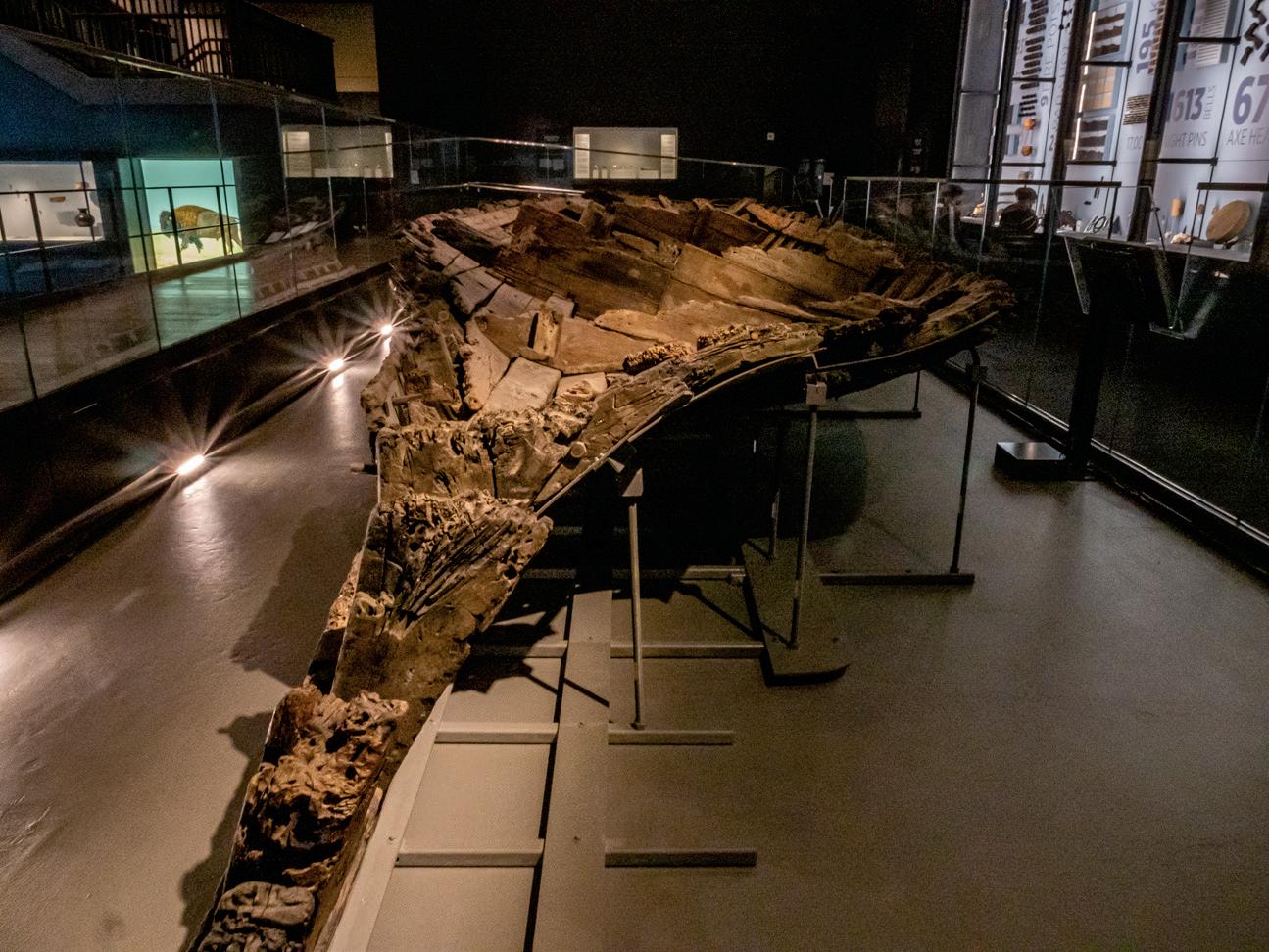
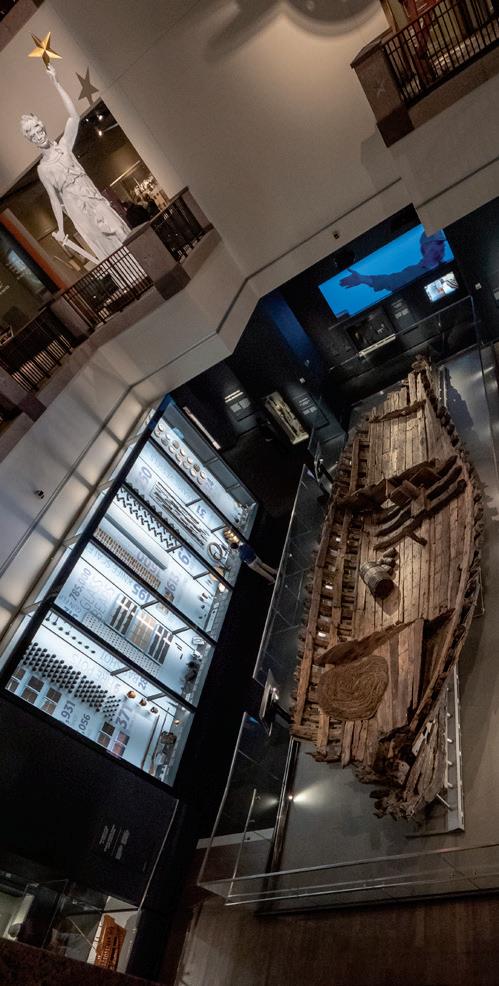
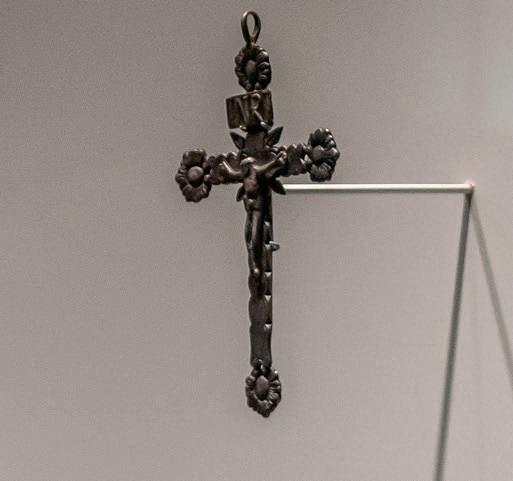
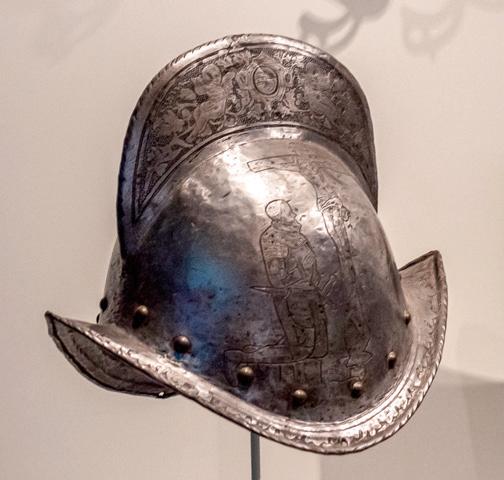
Interestingly, the Bullock Museum is a noncollecting museum, which means that the artifacts on display are on loan from collectors, including other museums. Sam Houston Memorial Museum (SHMM), for example, has, according to former Director Mac Woodward, “loaned the Bullock Museum artifacts such as Sam Houston’s leopard (jaguar) vest, Santa Anna’s chamber pot, and other items of historical interest.” This type of arrangement benefits both museums. It offers new artifacts to the Bullock Museum for display, while providing exposure to the SHMM and its holdings.
Of course, this also means that artifacts leave the Bullock Museum periodically, to be replaced by items loaned from other sources. In the case of La Belle, however, the vessel has been a mainstay since its installation, and Museum staff note that their custodianship of their first-floor centerpiece is “very long-term.” For many, the second floor, which tackles the state’s quest for “Identity,” is the most intriguing and familiar. It is here visitors will learn about Stephen F. Austin’s journey to Texas and the work that made him the “Father of Texas;” see Elisabet Ney’s “Sam Houston” statue; follow narratives of the Alamo and the Battle of San Jacinto; and explore the state’s tumultuous early days in the Union and unfortunate time in the Confederate States of America. Interpreters are occasionally on hand to provide information about the era or one of the Museum’s many artifacts.
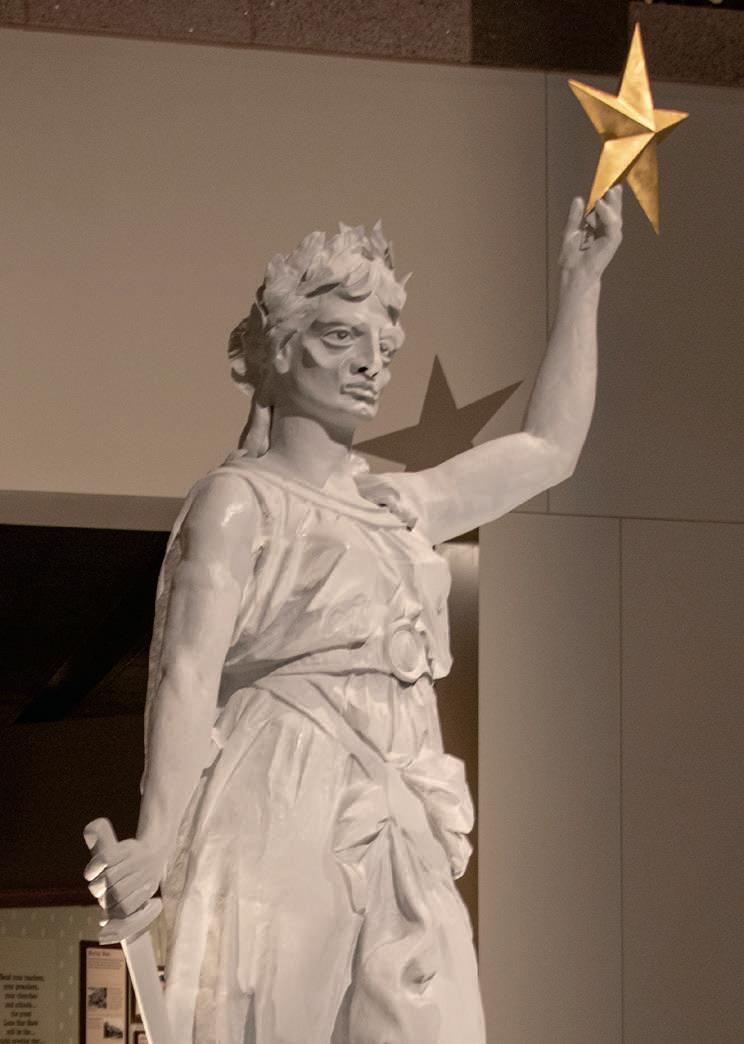
The third floor of the Museum showcases collections that reflect the state as a land of “Opportunity.” The state’s oil industry is featured; ranching and farming are discussed; air and space exploration are highlighted; Texas’ first-class medical facilities are spotlighted; and Texas’ contribution to music are showcased. Images of and facts about notable Texans—from
